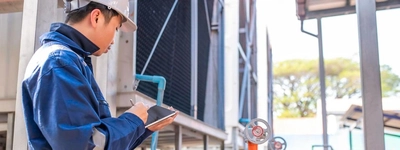Inertial sensing microelectromechanical systems have opened new avenues for the measurement of body kinematics. Their small form factor has allowed the design of wearable inertial measurement units (IMUs) that can track linear accelerations and angular rates in three dimensions from specific body segments (PASQUET et al., 2016). In my final work for the undergraduation, we develop a system which is capable of measuring human balance in the elderly. The system measures the angles as you can see in the image and assists in the diagnosis of lack of postural balance in the elderly.
This work resulted in a patent registration number BR1020170169316, you can also consult when it is available.
DELATORRE, Amanda; TREUK, Pâmela Micheli. Inertial measurement device to assess balance in the elderly 2017. 71 f. Completion of course work (Bachelor’s degree in Electronic Engineering) - Federal Technological University of Paraná. Ponta Grossa, 2017.
As the world population is aging and falls in elderly individuals are recurrent, the study of postural control in the elderly becomes important. The study of postural control is complex since it is performed in individuals with a deficit in motor capacity. Therefore, for the study of body oscillation, a system composed by inertial sensors is proposed. The application of the inertial sensors for the diagnosis of postural control has the ability to measure the oscillation angles of an individual’s body’s center of mass. In this work, research is performed in microelectromechanical technology sensors, more specifically, an accelerometer, a magnetometer and a gyroscope. The prototype’s design consists in the development of a circuit composed of differentiated stages according to their functionality, such as the acquisition module, the control module and signal processing, and the communication module. The body oscillation signal is acquired through the GY-9250 sensor, which is composed by an accelerometer, a gyroscope, and a magnetometer. The gyroscope, the accelerometer, and the magnetometer work individually with their sampled variables. In order to perform the required analysis of the angles, it is, then, necessary to join the data of three individual sensors together. With the data of the angles obtained through the sensors an estimation of the position and the orientation in the R3 space of the individual’s body’s center of mass is proposed. The rotation angles in the space R3 are the yaw, pitch and roll angles. These rotations are implemented through the use of quaternions. The acquired signals are filtered, processed, and then sent to a computer, where they can be visualized by means of graphics created in the MATLAB® software. The microcontroller used in the project is the ATMEGA328P, responsible for processing and controlling the data traffic between the sensor and the Bluetooth® module HC-05. The microcontroller manages the communication between hardware and computer in order to deliver the data visualization in a graphical interface. The results obtained in this work take into account the conditions of postural oscillation monitoring and are considered both significant and satisfactory. Proposals for future research are discussed and presented.
PASQUET, Matthieu O. et al. Wireless inertial measurement of head kinematics in freely-moving rats. Scientific Reports, [s.l.], v. 6, n. 1 21 out. 2016. Springer Nature. http://dx.doi.org/10.1038/srep35689.


